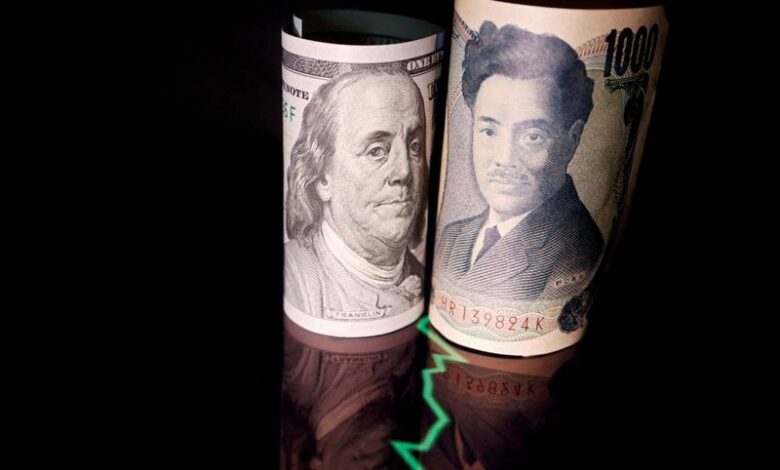Yen poised for best week in over a year; dollar waits on US jobs data

By Rae Wee
SINGAPORE (Reuters) – The yen was headed for its best week in more than a year on Friday, helped by Tokyo’s suspected intervention this week to pull the Japanese currency away from 34-year lows, which also left the dollar broadly on the back foot.
The yen rose to a session-high of 152.895 per dollar in early Asia trade and was set to clock a weekly gain of more than 3%, its largest since December 2022. It was last more than 0.4% stronger at 152.96 per dollar.
Traders were left on tenterhooks for any further huge swings in the yen after Tokyo is suspected to have intervened to support its currency this week to the tune of some 9.16 trillion yen ($59.79 billion), as suggested by data from Bank of Japan (BOJ).
Japan’s latest forays into the currency market came during periods of thin liquidity, with the country out for a holiday on Monday while the second attempt happened late on Wednesday after Wall Street had closed.
“Calculated and opportunistic market action for maximum effect is preferred. And the (Ministry of Finance) is practiced in this. What’s more, the element of unknown and surprise are key advantages that the BOJ and MoF will want to retain,” said Vishnu Varathan, chief economist for Asia ex-Japan at Mizuho Bank.
The yen has strengthened nearly eight yen against the dollar since the start of the week, when it first slid past the key 160 per dollar level which some have said could be the line in the sand for authorities.
Elsewhere, the dollar lost ground against most of its peers and was headed for its worst week in nearly two months, in part due to the sharp rise in the yen this week.
Traders are now looking to U.S. nonfarm payrolls data due later on Friday to guide the dollar’s next moves, after Federal Reserve Chair Jerome Powell told markets this week that the central bank’s next move in interest rates would likely be down, and not up as some had feared.
The Fed held interest rates steady at the conclusion of its two-day monetary policy meeting, as expected, and signalled it is still leaning towards eventual rate cuts, even if they may take longer to come than initially expected.
The euro ticked up 0.05% to last trade at $1.0730, and was eyeing a weekly gain of 0.35%. Sterling steadied at $1.25365 and was similarly set to rise more than 0.3% for the week.
Against a basket of currencies, the dollar, which has struggled to regain its footing in the wake of the less-hawkish-than-feared Fed comments, was little changed at 105.32.
The was on track to lose 0.7% for the week, its worst performance since March.
“Recent Fed speech has acknowledged the lack of progress on inflation and the desire to maintain the current level of policy rates for longer. That said, it does seem clear the Committee remains biased to cut rates, but any policy easing will be determined by how inflation develops over the next few months,” said Tai Hui, APAC chief market strategist at J.P. Morgan Asset Management.
“We now expect the Committee to reduce rates 1-2 times this year, with risks skewed to fewer cuts.”
Down Under, the Australian dollar edged 0.07% higher to $0.6570, and was on track to gain nearly 0.6% for the week.
The New Zealand dollar tacked on a marginal 0.03% to $0.5963, and was eyeing a 0.4% weekly gain.
($1 = 153.2100 yen)


